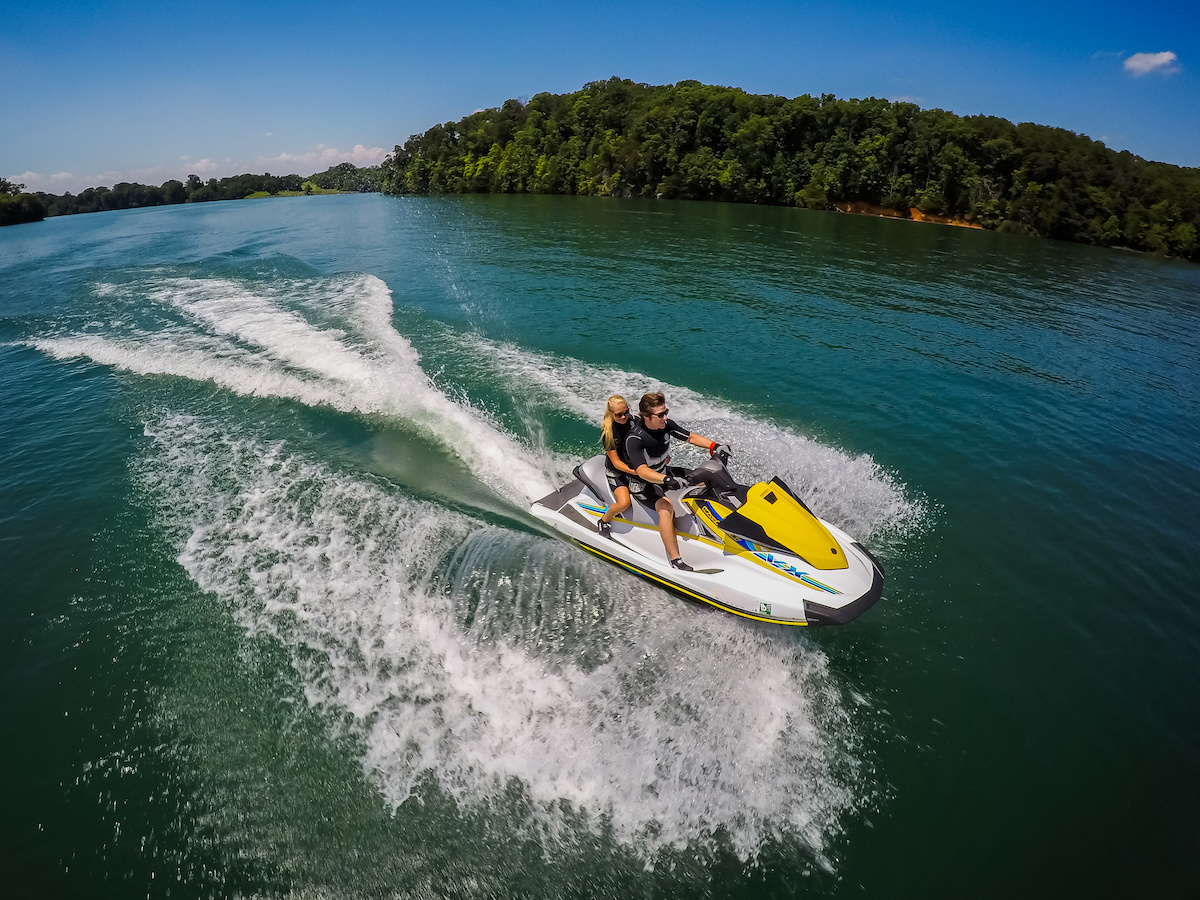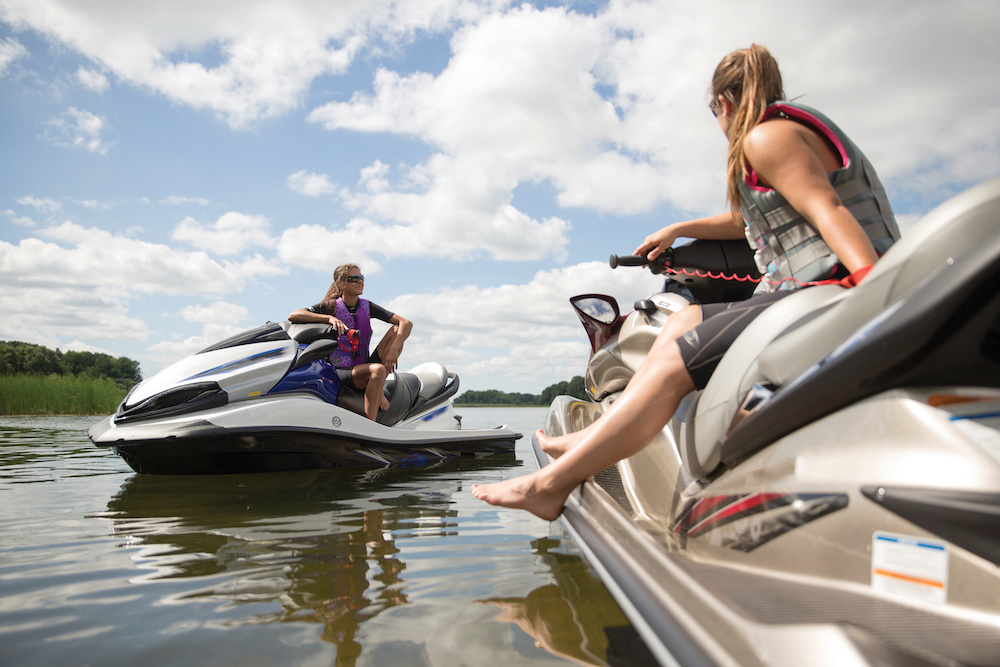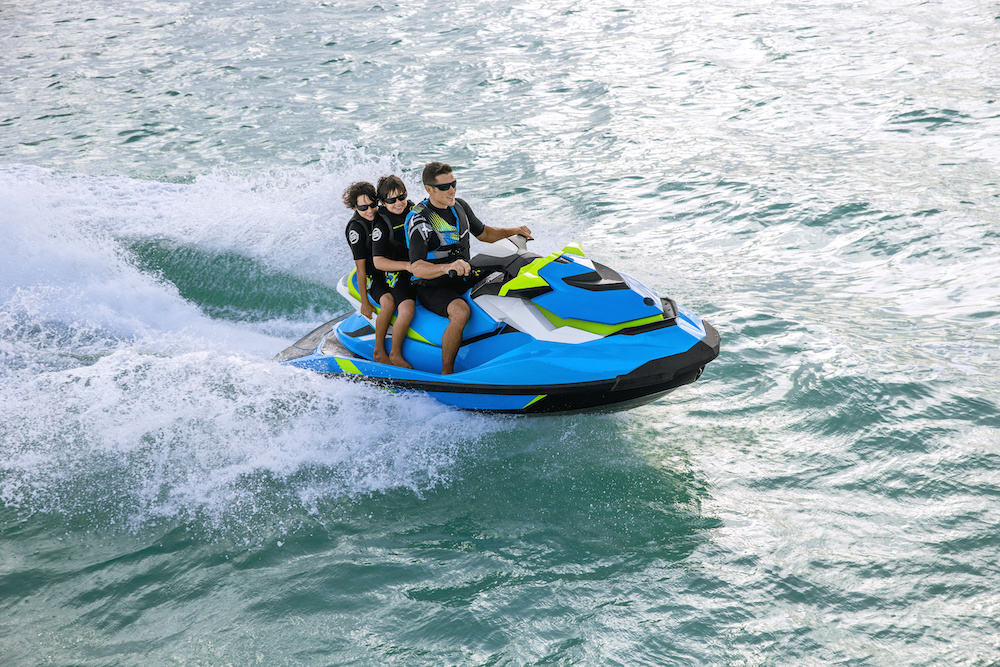Buying a Personal Watercraft (PWC): Beginner’s Guide

Personal watercrafts (PWCs) offer nimble handling and amazing performance in a package that’s affordable and easy to own. Some could argue that no boating option offers more value—or bang for the buck—than a personal watercraft. In much the same way Kleenex has became synonymous with facial tissue, a PWC is often referred to as a Jet Ski, WaveRunner or Sea-Doo—which are all known name brands of personal watercraft manufacturers including Kawasaki, Yamaha and BRP, sequentially. Buying the best PWC for your needs, similar to buying any boat, involves making a few important choices.
How to Buy a Personal Watercraft (PWC), Jet Ski or WaveRunner
- Determine the number of passengers you want to carry.
- Compare different models—rec-light, recreation, touring/luxury, performance, and stand-up.
- Decide if you’d like to buy new or pre-owned.
- Set your budget and explore financing options.
- Start shopping—find out where to buy.
- Research personal watercraft values and consult pricing guides.
- Work with a dealer—and close the deal.
Learn More: Comprehensive Boat Buyer’s Guide

Two-Passenger or Three-Passenger?
Almost all new PWC models are rated to carry three people, but not all are really comfortable with three adults on board. Mid-size three-passengers models can carry three adults in a pinch but two adults and a child is really more realistic. Some of the smaller Rec-Light-category models, and some high-performance PWC, are rated for two passengers. A three-passenger model offers seat room and buoyancy to comfortably carry two adults for a long cruise. That three-passenger rating is also a requirement when using a PWC to tow tubers or wake boarders in most states.
Compare Brands & Models
For a complete list for certified brands and manufacturers, visit our Personal Watercraft (PWC) page.
Rec-Light Models
These most-affordable PWC models can carry two adults (or two adults and a child), have a 60 to 100 HP engine, and can reach a top speed of about 45 MPH. They don’t really have enough power to tow a tube or boarder, and often don’t have some of the convenience features found on larger models. They also have a smaller and lighter hull that works fine in smooth water but can deliver a rougher ride when conditions get choppy.
Recreation Models
The mid-rage offered by PWC manufacturers, these models are larger and faster than the Rec-Light models, and can come with more features. Engine options may range from about 120 to 180 HP, good for a top speed of 50 to 60 MPH. Features offered on Recreation models include electronic reverse control, speed control options, performance options (such as a fuel-saving ECO mode), security systems, and optional audio systems. Some models can be set up for long-range cruising with a bolstered seat, or for towing with a tow-line pylon.
Luxury/Touring Models
These feature-laden models offer the most-powerful engines, with more than 300 HP available and a top speed exceeding 65 MPH. The large hull—over 11 feet long—is designed to offer a comfortable and stable ride in most water conditions. They also offer more storage and fuel capacity than the Recreation models. Electronic trim and reverse controls, adjustable speed and performance options, a touch screen display, a security system, adjustable handlebar angle are often standard equipment. There are models designed for specifically for touring, fishing and tow sports.
Performance Models
Designed for experienced riders looking for no-compromise performance inspired by competition, a Performance PWC is often the quickest and fastest boat on any lake. The hull and deck is often molded from special lightweight material, the jet pump is enhanced with special components, and the highest horsepower engine is placed under the seat. The result is not just top speed approaching 70 MPH, but eye-popping acceleration and razor-sharp handling. These are not machines intended for beginning riders.
Stand-Up Models
This is where the sport began—a narrow hull with a handlebar control mounted on a moveable pole. Riding a Stand-Up PWC requires some athletic ability and a lot of practice, but it’s that challenge that many riders find rewarding and entertaining.
Currently the Kawasaki Jet Ski SX-R is the only Stand-Up model available for recreational riding. The Yamaha SuperJet is sold only for closed-course competition. Pre-owned models are an option for those who want to give a stand-up model a try.

PWC Gear & Accessories
- Trailer: Most PWC owners have a trailer to transport the craft, even if it’s kept on the water during the riding season. A trailer will be needed to transport the craft for service and off-season storage.
- Life Jacket or PFD: A Type III PFD must be worn when riding a PWC—learn more here.
- Riding Gear: Neoprene shorts or PWC trunks with a neoprene liner provide the PWC rider and passengers with a comfort and protection. A PWC wet suit can be worn for riding in cold water or for extending the riding season. Closed-toe boat shoes, water shoes or PWC riding booties provide better traction and protection than bare feet or flip-flops.
Read Next: Costs of Boat Ownership
Interested in learning more about personal watercrafts (PWCs)? Read…
- Personal Watercraft (PWC) Safety Guide
- Green Boating Tips for Personal Watercraft Users
- Small Boats: What Are My Options?
- Boat Loan Calculator
- Explore Other Boat Types

